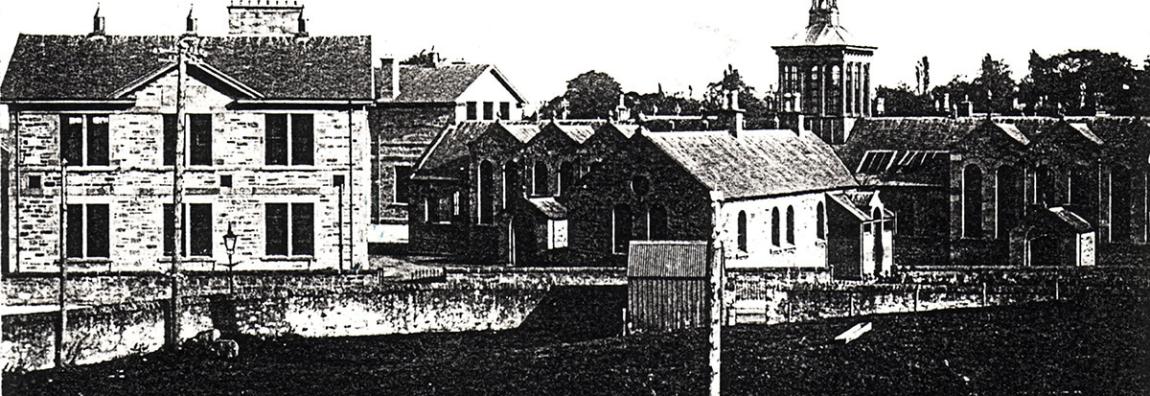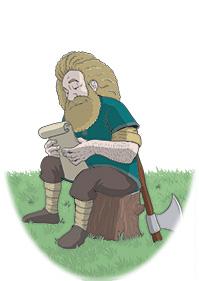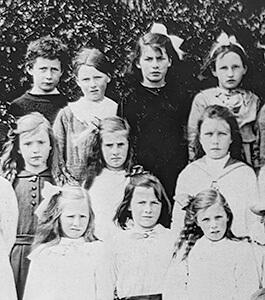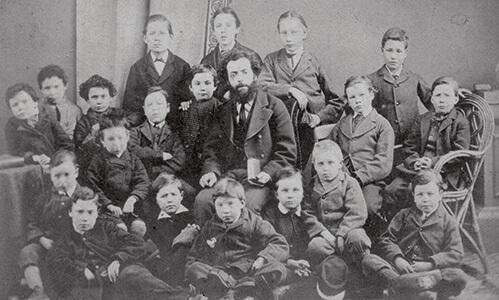

Teaching
The earliest named schoolmaster in surviving records was John MacRa in 1664, later the minister of the parish. Boys in 1730 learned ‘the reading and Wryteing of English and Common Rules of Arithmetick & for teaching the Latine’. There was some provision for teaching ‘young Girls white & Coloured Seams Semplars & other needle work in this Burgh’ (1758) or ‘music and other Branches of female Education’ (1793).
There are mentions of Dingwall schoolmasters in records going back to the 1660s, when there was still a Scottish Parliament and Charles II was new on the throne. The earliest one named was John MacRa in post in 1664. He was later to be the minister of the parish and it shows the clerical and religious development of schools that the schoolmasters were expected to triple up as Clerk to the Session and Precentor; presumably because of the ability to read and write and a continuity with the mediaeval Church. The position was used as a stepping stone into the church by prospective ministers. William MacBean in 1730 was appointed ‘for Teaching the reading and Wryteing of English and Common Rules of Arithmetick & for teaching the Latine’.
The schoolhouse—wherever it was—was in poor condition, so when the new Town House was built it had provision for schooling that lasted it for a couple of generations (and a dozen schoolmasters) until the new one was built in about 1782 and Alexander Simpson came from Inverness to teach the boys there. He stayed teaching, and became a councillor and Baillie for the next 30 years until his death in 1822.
There was some provision for teaching ‘young Girls white & Coloured Seams Semplars & other needle work in this Burgh’ (1758) or ‘music and other Brenches of famale Education’ (1793) but the schoolmistress was paid £10 every six months whenever the Burgh could afford it, while the schoolmasters were paid out of the rates. Not always on time though, in many years of the early 1700s the master had to beg the Magistrates for their stipends.
There is a school at the bottom of the Greenhill on I Clark’s 1824 picture of the town: the man is likely to be the Catechist William McKay, there to teach religious studies to the children in this house attached to the Manse and built at the end of the long thin Mansefield.
Schools

The Parish school continued and after the 1843 Disruption the Free Church Institution was started. It and the Parish School amalgamated here in 1876. As the roll grew and more subjects were taught extensions were added in the 1890s, and in 1901 the Science Building—to the left of the entranceway—was added. A Gymnasium furnished with Swedish state-of-the-art equipment came in 1904. An Arts Block was built in 1910 to house English and Modern Languages classes along with an Art Room. More than 500 past-pupils served in the Great War of whom 112 never returned. A plaque showing the names of the lost was erected in the Art Room in 1922.
A few days after the Second World War was declared in 1939 a New Academy opened its doors to pupils on fields on Tulloch Brae.
In 1939 the military took over the Old Academy complex for the duration. After the war the Old Science Building became the County Library; the Arts Block became a Community Centre; St Clements School was housed in the original 1869 school building; and the Gymnasium was destroyed by a fire in 2015.

In 2008 Dingwall Academy pupils moved once more into an even newer building on the same site replacing the 1939 New Academy.
Further reading
Norman MacRae: Romance of a Royal Burgh; Dingwall's Thousand Years (1923, reprinted 1974)
D D MacDonald: Dingwall Academy (n.d., c1989)
Panel sponsored by Highland Council and Dingwall Common Good Fund
Do you know something we don't?
Please contact us if you spot an error here or on the panel, or if you have a suggestion for improving the information using »»» this form.

Once you have enjoyed your walk and learning more about Dingwall, you can donate between £1 and £20 by text towards the maintenance and development of the Heritage Trail.
Text DINGWALL to 70450 to give £3.
To donate any other value, add the digit/s: e.g. DINGWALL5 gives £5, DINGWALL12, £12. We, along with over 5500 charities across the UK, trust DONR to collect donations securely.
